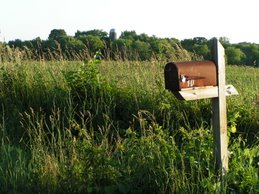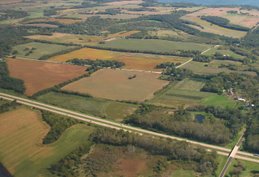Here’s a great line from one of my favorite comedians:
"You never know what you have until it's gone, and I wanted to know what I had, so I got rid of everything." - Steven Wright
Maybe that’s not such a bad idea. What would we really miss? What would we put in its place?
I certainly wouldn’t miss the closet full of project files that I ended up with after I sold my business. Come on… admit it… you also harbor a different, but equally useless, stash. Let’s face it; nobody alive today will ever ask for papers that are already 5 to 25 years old even if we did manage to remember we had them! (Exception: This excludes all documentation required by guys with guns… the IRS.)
In addition to the cardboard-clad “files” of paper, consider all those plastic-encased tubs of trinkets. It probably amounts to quite a pile of stuff weighing us down and not a collection of treasures that lifts our spirits. In fact, this assortment often distracts us from more important things. Oh sure, you have it closeted all right, but how many times are you going to move it from dwelling to dwelling or room to room over the course of your life?
Wouldn’t it be better to clear some of the clutter to create an opening for new thoughts and room for new interests (ok, new stacks of paper and plastic)?
I think Fitchburg residents have an equally useless and distracting set of clutter. (You knew I’d somehow relate this to the Blog’s theme… right?) We seem to shelter tattered ideas and drag them out from time to time instead of tossing them into the recycling bin. Sure we need to preserve some history (those breadcrumbs showing where we have been) but, above all, we need to pay attention to new information.
In case you haven’t guessed where I’m headed, this new input should serve as the basis for our revised vision of Fitchburg in the year 2030 or beyond. Instead of harping about the previous versions of the Future Urban Development plan, let’s listen to experts as they guide us in a new direction. We have more tools and more facts now than at any time in the past. This is both bad and good. We have more ways to destroy our habitat, our environment, our home. But, we also have more ways to measure this destruction and evaluate how to reverse the trend.
(1) One such reversal is to restore wetlands and protect streams and creeks through buffers and stream bank projects. (Water Quality)
(2) Another is to create (and live within) our Water Budget by knowing how much water we extract from the aquifer and how much we put back. (Water Quantity)
Although the Plan Commissioners have looked at farmland preservation and many other factors as they create a new Urban Growth Boundary, they have yet to factor in these two related concerns.
During his presentation on Sept. 4th (described in an earlier entry here), Professor Cal DeWitt recounted a conversation with someone at the Fish Hatchery. He described his research showing that adding a new municipal well probably reduced the flow of an old artesian well one mile away at Nevin Springs Fish Hatchery. The person responded to this discovery by saying “That well’s already built. Right? Then, we can’t do anything about it.” But, as Professor DeWitt pointed out, that’s the way our whole environment deteriorates, of course.
Instead of only caring about the “top quality” wetlands, streams and lakes, we should be doing everything we can to restore all water resources to their original state. It is foolish to let some resources die an unnatural death at our hands just because we’ve let them degrade up until now. There are ways to protect them from further harm and also to slowly restore them to health.
Creeks and streams have a purpose and we need to appreciate their role. I was amazed to learn that once we’ve degraded a creek to certain level, the city no longer offers it the same protection as one that managed to escape that level of damage. Isn’t this backwards? Shouldn’t we be doing more to protect the one that needs it the most?
Wetlands help clean and regulate the water in our area and we need more of them not less. Our current guidelines protect the “high quality” wetlands more than those we’ve degraded to a greater extent. Again, this is backwards or at least short-sighted. Let’s strengthen the regulations to protect them all (when feasible). We should also identify areas that were once wetlands by evaluating the telltale hydric soils and restore them whenever possible to help prevent catastrophic floods and purify our water for decades to come.
A recent study, Strategic Watershed Restoration and Protection Plan for the West Waubesa Wetlands, by a UW–Madison class evaluated hydric soils in one watershed covering a large portion of Fitchburg along with parts of the Town of Dunn. The map below shows hydric soils identified in the study. For orientation, Hwy 14 runs north and south through the center of the map from McCoy Rd (top) to north of Hwy M (bottom). Click here to view a larger version of the map and for more information about the study, please email me at fitchburgvoices@gmail.com.

Although groundwater recharge has been considered by the Planning Commission, it has been analyzed under the assumption that we want the most “recharge” per acre so areas were considered more valuable if they scored in the top 25% based on infiltration criteria. Although their definition of good infiltration is debatable, even if it’s accurate it misses the point. Dr. Ken Bradbury, Groundwater Expert and Hydrogeologist, University of Wisconsin-Madison, Wisconsin Geological and Natural History Survey, gave a presentation last week explaining the hydrogeology system which underlies the Yahara Basin, including Fitchburg, and describing how scientists model and predict underground water movements. During the Q&A discussion, he indicated that although some recharge areas may be considered more important than others, all are important because some areas recharge different water features than others.
See the problem? If we recharge areas that affect X and not those that affect Y, Y will suffer.
In addition to recharge, the quantity of water we pull from the aquifer is also a big concern. As reported in recent newspaper articles, Dane County is now drinking from a couple of its lakes because numerous high capacity wells in the area are drawing down the aquifer enough that the water is no longer flowing into some lakes and is instead seeping from the lakes into the aquifer.
Dr. Bradbury also stated that in all of Wisconsin there are two areas that are having serious problems with groundwater (Green Bay and Waukesha) and two others that are designated as Groundwater Attention Areas to be watched – the Little Plover River (which recently dried up for the first time ever) and… you guessed it… Dane County.
I recently saw the new documentary film The 11th Hour. Without giving away the “plot” (which you probably already know), I was struck by one very unusual and startling calculation; it would cost the world about $35 trillion a year to perform all of the functions that nature does for us free of charge. That’s something like twice the size of all the world’s economies! Talk about externalities! This free service includes things like turning carbon dioxide into oxygen and pollinating plants. I assume it would also include flood control and water purification.
So, shouldn’t we use the *Precautionary Principle as we plan for our city’s future? The natural world is not just priceless from an aesthetic standpoint but is way beyond reach in economic terms. Will we miss it when it’s gone? Of course! What would we put in its place? The truth is; we can’t afford to replace it even if we knew how!
Please let your Plan Commissioners and Alders know that you want them to protect all of our water resources as they plan for the future of Fitchburg.
Footnote:
* (From Wikipedia) “The Precautionary Principle is a moral and political principle which states that if an action or policy might cause severe or irreversible harm to the public, in the absence of a scientific consensus that harm would not ensue, the burden of proof falls on those who would advocate taking the action.”



No comments:
Post a Comment